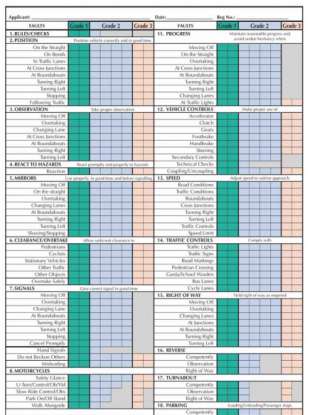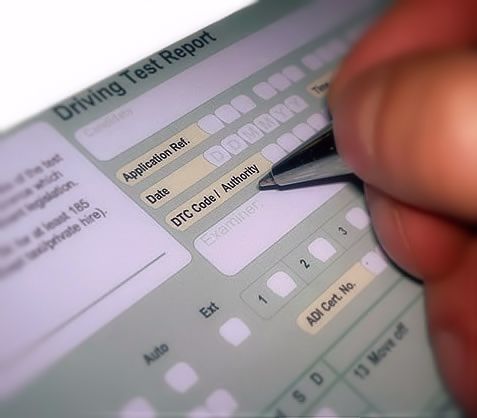


Platform Specificity and Equipment Limitations. in a variety of road and traffic situations as they develop during the drive. We assess practical fitness to drive based on observation of speed choice, lateral and longitudinal position control, viewing behavior, gap acceptance, application of priority rules, etc.
Uk driving test score sheet drivers#
In the City Drive we use a city and route developed in research on intersection complexity and ADAS in older drivers (Davidse, 2007). In various conditions the average lateral position, the standard deviation of lateral position, lane crossings left and right, and collisions with other traffic are computed. The test requires steering at various speeds on a winding country road with alternating left-right curves and a continuous stream of traffic from the opposing direction. In the Swing Drive we assess the operational skill of lateral position control and the tactical skill of controlling speed in response to changing motivation and operator capacities.
Uk driving test score sheet simulator#
As an addition to a neuropsychological examination, a driving test in a realistic driving simulator can be a useful tool to assess (lacking) compensatory driving skill in brain-damaged drivers. Test drives in a driving simulator for the assessment of brain-damaged drivers have not yet been properly validated and standardized. Key Results of Driving Simulator Studies. By means of three case studies with very severe TBI the additional value of the driving simulator tests is illustrated and discussed. The tests and the context in which they are used are described. To be able to assess compensatory potential, two test drives in an advanced driving simulator are included in the neuropsychological assessment of fitness to drive. Many drivers in this population, however, succeed in compensating effectively for these functional limitations, presumably because higher-order “tactical” aspects of driving allow them to anticipate and avoid driving situations which would be too demanding. This particularly concerns basic “operational” driving tasks like brake reaction time, visual search time, and lateral position control (Van Wolffelaar, Brouwer & van Zomeren, 1990). On-road driving performance in this population is significantly related to performance on neuropsychological tests of attention and information processing. Very severe traumatic brain injury (TBI) can cause persistent functional limitations in visual-motor and cognitive functions which may have consequences for fitness to drive.


 0 kommentar(er)
0 kommentar(er)
